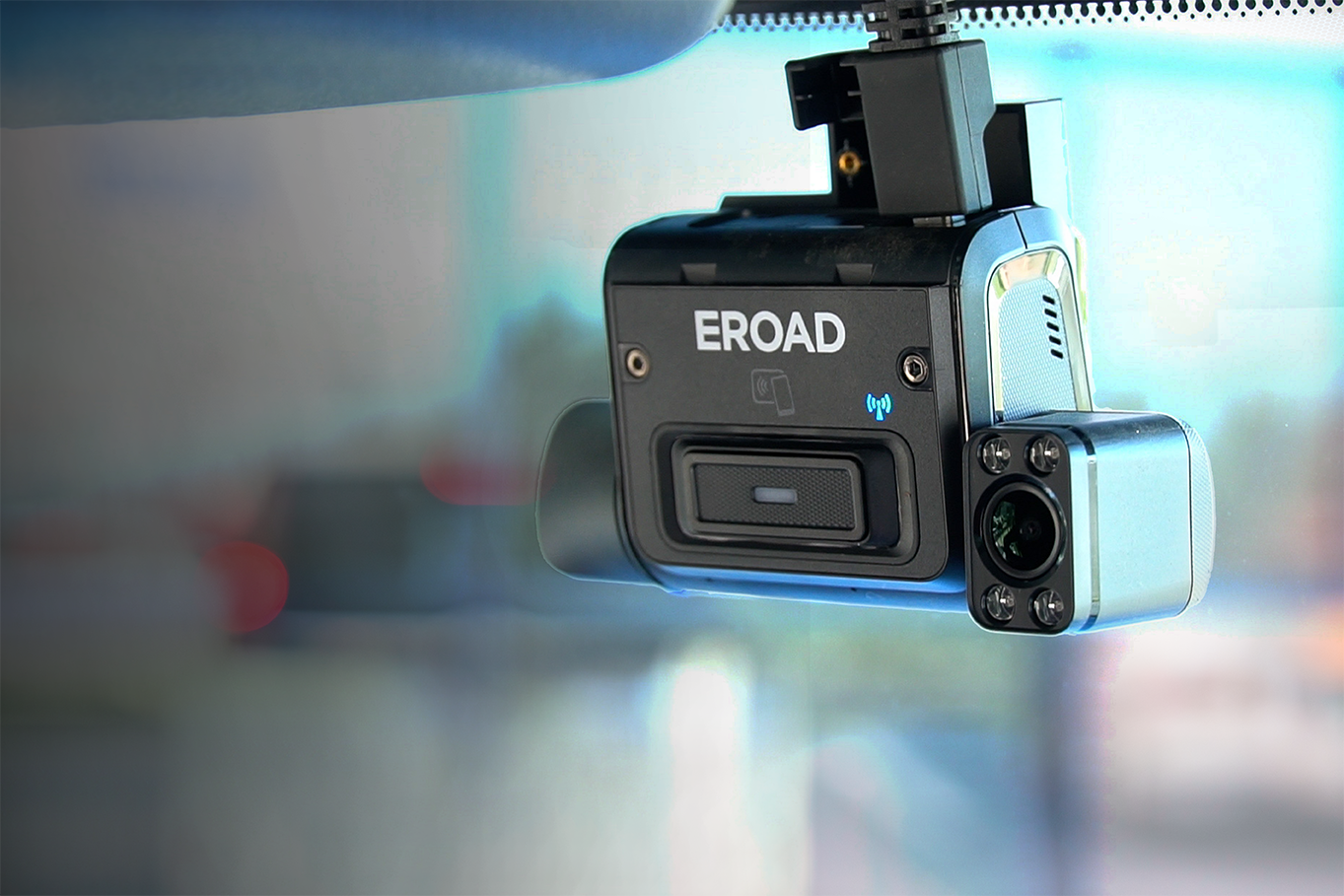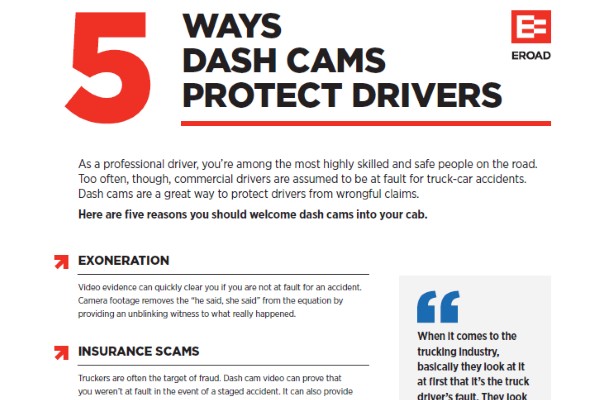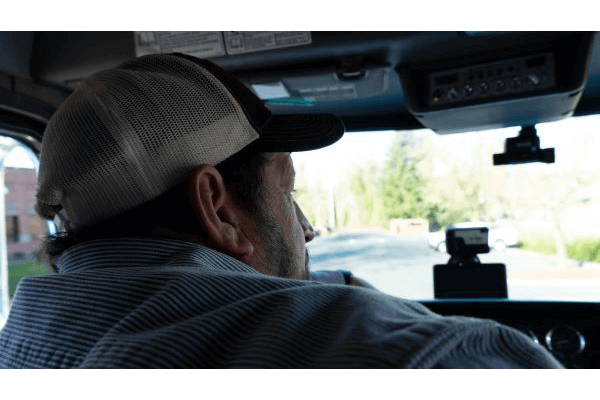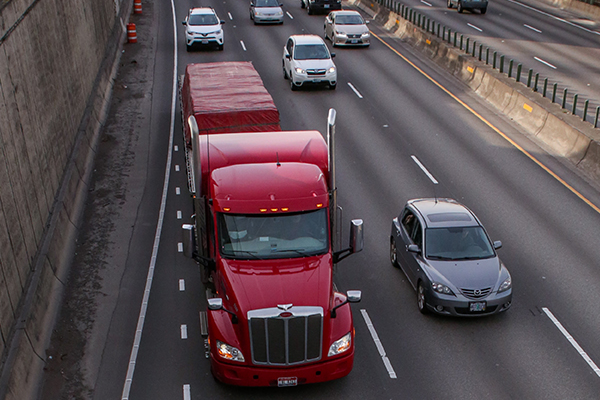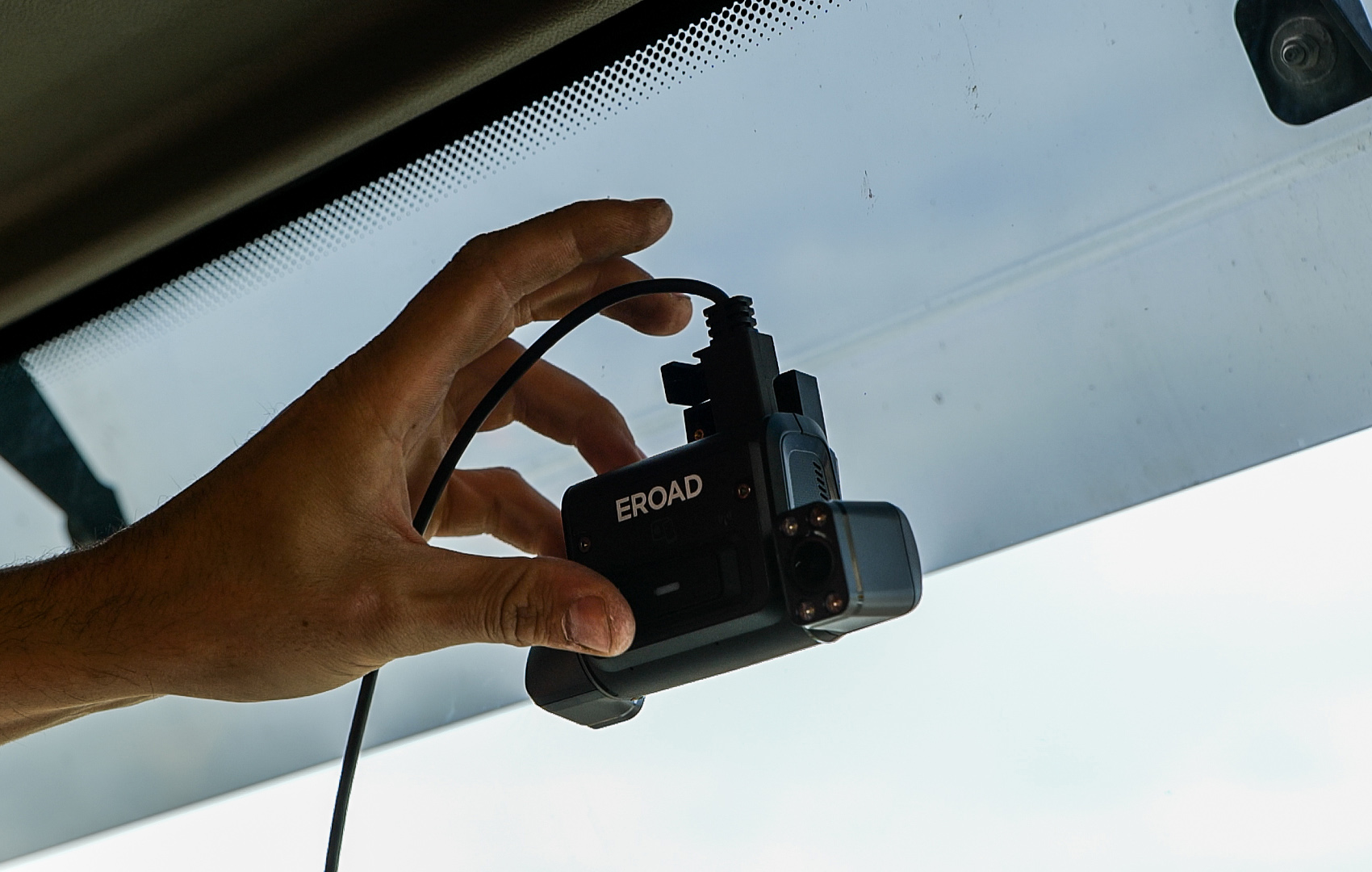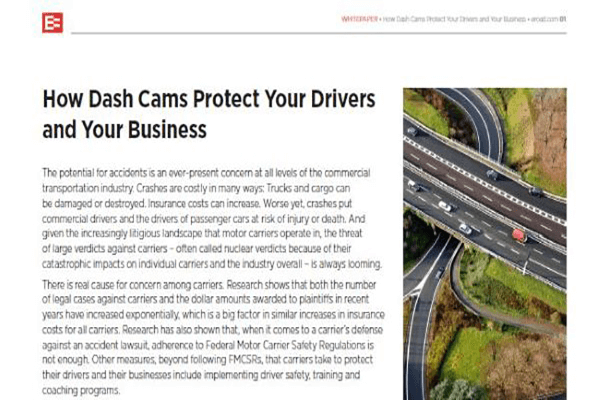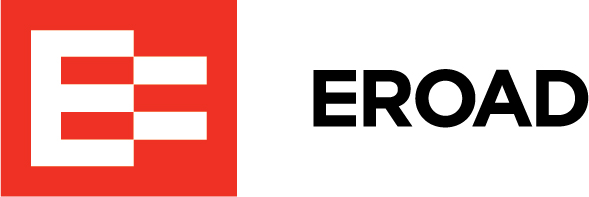Video Telematics: Everything You Need to Know
Effective risk management is crucial to the long-term success of any business. For businesses that rely on the use of fleet vehicles to deliver goods and services – from over-the-road trucking companies to construction industry suppliers and service fleets – a big part of managing risk involves ensuring that employees and contractors operate vehicles in a safely. Monitoring driving behavior can be difficult, however, and too often problem behaviors don’t come to light until there is a safety incident.
For that reason, more and more transportation businesses are implementing a video telematics solution that contextualizes traditional telematics data with the addition of video. This combined data provides safety and operations managers with the information they need to identify undesirable driving behaviors and address them with proactive coaching to prevent major safety incidents. Additionally, data from video telematics can help businesses defend against fraud and legal claims.
What Is Video Telematics?
Video telematics combines traditional telematics data about how a vehicle is driven – recording incidents like speeding, braking and harsh cornering – with video footage of what is happening on the road. In some cases, in-cab cameras may be paired with telematics devices such as electronic logging devices (ELD) to provide a comprehensive picture of driving activity. In others, an all-in-one device, such as the EROAD Clarity Solo, can be used to provide both telematics data and video. The latter is often implemented by construction and service fleets and other businesses that rely on vehicles but are not legally required to use ELDs.
Video telematics devices are often designed to automatically capture clips and upload them to the cloud for review when triggered by safety-critical driving events, such as hard breaking and turning, rapid acceleration and collisions.
How Costly are Vehicle Accidents for Businesses?
The average motorist has about a one in 15 chance of being in a car accident each year. For workers who spend their days hauling goods across the country, making last-mile deliveries or traveling to and from jobs and worksites, the chance of being in a crash only increases.
On-the-job crashes cost companies on average more than $26,000 per crash, according to the Network of Employers for Traffic Safety; the costs can skyrocket when serious injuries or fatalities result from an accident. And there are also a host of indirect costs that can make accidents even more expensive, such as increased insurance premiums, loss of productivity, damage to reputation and more.
Network of Employers for Traffic Safety
The outlook for commercial trucking companies is especially bleak. Despite data showing that commercial drivers are at fault in serious accidents far less often than the drivers of passenger cars, lawsuits against motor carriers have increased at a “nearly exponential pace,” according to the American Trucking Research Institute (ATRI).
“When it comes to the trucking industry, basically they look at it at first that it’s the truck driver’s fault,” said Mike Powers, director of fleet safety at Byrne Dairy in New York. “They look at the driver first, being in the bigger unit, and then they try to piece it together.”
Moreover, verdicts against carriers are getting larger. The ATRI report cited above found:
- Between 2010 and 2018, the average verdict award increased more than 61% annually. At the same time, inflation and healthcare costs grew just 1.7% and 2.9%.
- There were 26 cases involving awards of more than $1 million in the first five years of the analyzed data; in the last five years, there were nearly 300. The number of verdicts exceeding $10 million almost doubled in that time.
- For verdicts exceeding $1 million, the average size increased 967% – from about $2.3 million to nearly $22.3 million.
How Can Video Telematics Protects Businesses?
Exonerate Drivers
Driver exoneration is the No. 1 benefit that video telematics can provide for transportation businesses.
Video telematic devices provide an unbiased, unblinking witness to what happens on the road. In the case of an on-the-job crash, video evidence can quickly establish who is at fault for an accident, often exonerating your driver and saving you the time and expense associated with defending against a claim – not to mention the potential for increased insurance premiums.
– Brett Spicer, International Wood Products
While accidents are costly for companies, they can also result in legal issues for company drivers and hurt their future employability. Cameras remove the “he said, she said” from the equation and can clear drivers when they are not at fault for an accident.
“We’ve had a few accidents where if it wasn’t for the cameras, we probably would have been found at fault just because of how it hit the vehicle or the location of the vehicle,” said Brett Spicer of International Wood Products, which added EROAD’s Clarity Connected to its fleet in 2021.
While video can be crucial for exonerating drivers in traffic accidents, it can also help you sort out any minor claims and complaints that arise. For instance, someone may claim that your employee caused property damage with their vehicle. You can easily go back and review the footage and determine what really happened.
Coach Drivers
Proactive safety coaching is crucial to preventing crashes and other incidents that can harm your business. That’s where a video telematics solution can be especially helpful.
Automated alerts about potentially dangerous driving behavior – speeding, hard cornering, harsh acceleration, hard braking – paired with video footage provide the hard data you need for impactful coaching. Eliminating dangerous driving behaviors also results in less wear and tear on your vehicles, reducing unplanned maintenance and extending vehicle life.
“[Video] allows us to hold drivers accountable, but also to not falsely accuse them of something that they weren’t doing,” IWP’s Spicer said. “If someone calls in about a driver and says they were driving erratically, we can see if that was or wasn’t the case. We found that it works to our drivers’ advantage more than anything else, as opposed to a way to get them in trouble.”
Also, according to the previously cited ATRI report, juries have a more favorable view of companies that exceed minimum safety regulations. The addition of video telematics to support robust driver coaching and safe-driving programs demonstrates a company’s commitment to safety – beyond what is legally required – and has the potential to help companies experience better outcomes in legal proceedings.
Protect Against Fraud
Accident attorneys aren’t the only ones looking at motor carriers with dollar signs in their eyes. Fraudsters target motor carriers with staged accident schemes that are both harmful to individual companies and detrimental to transportation-based businesses overall because they contribute to skyrocketing insurance rates.
Increasingly, however, companies are using video telematics to help expose staged-accident fraud, protect their businesses and safeguard the industry. In one well-reported case, video helped a Louisiana trucking company expose a sophisticated staged-accident ring and save tens of thousands of dollars in the process.
“Those cameras right there saved between $150,000 and $200,000 just by capturing the fraud and us not having to go and defend it,” the trucking company’s attorney told reporters.
– Matthew J. Smith, Coalition Against Insurance Fraud
Expedite Settlements
Generally, the longer it takes to settle a case, the more expensive it becomes. So, the sooner a carrier can determine that their driver is at fault in a crash, the better it is for the bottom line. Footage from video telematics helps carriers quickly make that determination and begin the settlement process.
“Even in the event that the camera footage shows that the commercial driver was responsible, it’s better to know that and quickly get the claim closed,” said Dan Petrillo of EROAD strategic partner LaPorte Insurance. “The more quickly we can get a liability determination in the life of that claim, the less likely it will turn into a much larger dollar claim.”
How Can Video Telematics Protect Employees?
Many of the benefits and protections that video telematics provide to carriers also extend to drivers. And the potential for exoneration after an accident tops the list. Drivers wrongly blamed for accidents face many issues, from legal complications to problems finding a job in the future. Video can quickly establish blame after a crash, often clearing the commercial driver. Likewise, video provides protection for drivers in cases where they are targeted by staged-accident scammers.
In addition to exoneration, video paired with driver behavior data can work to the benefit of drivers. For instance, if a driver gets cut off and harsh braking is detected, video will show that the driver was not responsible for the safety-critical event.
Finally, video telematics can help protect drivers against less serious claims. If someone wrongly says a driver caused property damage with their truck, the video will show the truth. Or, if a driver arrives on time for a delivery, but the gates are locked or no one is around to receive the load, the video will document the circumstances.
Getting Driver Buy-In for Video Telematics
It’s important to note that drivers may be wary of having cameras installed in their vehicles, especially dash cams that are driver-facing and record audio. When adding video telematics to your fleet, it’s crucial to explain how they protect drivers from wrongful claims.
A study by the National Surface Transportation Safety Center for Excellence found that companies using video telematics had a much easier time getting their drivers exonerated. And one carrier cited in the study said that the driver exoneration benefit was key to getting drivers on board with in-cab cameras.
In addition to explaining how video benefit drivers, carriers should be upfront about how the cameras work, what is being recorded and when. Also, drivers should understand who will be able to access footage and how it will be used.
Finally, selecting a solution that is easy to use is important. Drivers already have enough to do. Don’t add camera operation to their list of tasks. Ideally, your fleet dash cam choice wouldn’t require any hands-on interaction on the part of the driver.
What Are the Most Important Video Telematics Features?
The biggest return on investment that video telematics provides is helping to establish fault in accidents to either quickly clear your driver or to expedite a settlement, reducing the overall cost of the incident. So, it’s best to keep those things in mind when selecting a camera for your fleet. Here are some key dash cam considerations:
Video Quality
Look for an option that records in high definition in both bright- and low-light conditions.
Configuration
All dash cams are designed to record what’s happening on the road in front of the vehicle. Some also offer driver-facing configurations. While some carriers may like the idea of a driver-facing camera, it’s also important to consider drivers’ privacy concerns.
Audio Recording
In-cab audio recording is a feature of many dash cams. And there are cases when audio along with video can be useful. However, like with driver-facing cameras, carriers should weigh the potential benefits of recorded audio against drivers’ privacy concerns.
Ease of Use
If a camera is difficult to operate, chances are it won’t get used. Or it may become a distraction for drivers. When selecting a dash cam, look for a model that records and transmits video clips automatically.
Continuous Recording
Some fleet dash cams offer event-based recording only. However, a camera that continuously records and stores tens of hours of video data gives carriers more insight into what occurred leading up to and after an incident.
Why Should Companies Add Fleet Dash Cams?
Transportation-based businesses are facing more accident-related lawsuits and larger verdicts than ever, even though professional drivers are at fault far less often than the drivers of passenger cars. In some cases, company drivers are targeted by scammers who stage accidents to take advantage of this apparent anti-trucker bias.
Carriers who embrace safety measures that exceed legal requirements are in a better position to shield their drivers and their businesses. Video telematics is among the measures that carriers should consider.
Video evidence can exonerate drivers, facilitate speedier settlements and enhance carriers’ training and coaching programs. Given the risk that companies take on every time a vehicle leaves the yard, video telematics offer affordable protection and peace of mind.
Related Information
Why You Need to Add Dashcams to Your Fleet
Too often, truck drivers are assumed to be at fault for accidents, even when they were driving at safe speeds, observing traffic laws and following safety regulations. But there is a tool that can help exonerate drivers and protect carriers from potentially catastrophic verdicts: fleet dash cams.
5 Ways Fleet Dash Cams Protect Drivers
From a business point of view, there are plenty of good reasons to add dash cams to your fleet. And many of those same reasons apply to commercial drivers too. Here are five ways that fleet dash cams protect drivers.
How to Get Your Drivers Comfortable with Dash Cams
Are you considering adding dash cams to your fleet (if you’re not, you should be!) and concerned about pushback from your drivers? Check out these strategies for getting your drivers on board with dash cams.
Expert Q&A: Dash Cams and Insurance
We recently spent some time talking to Dan Petrillo of LaPorte Insurance about the state commercial auto insurance industry and benefits of dash cams from an insurance carrier’s point of view.
Fleet Dash Cam Policy: Why You Need One and How to Create It
A formal dash cam policy that everyone abides by can go a long way to alleviate drivers’ concerns about why the cameras are there, what they record, who can access the footage and what it will be used for.
White Paper: How Dash Cams Protect Your Drivers and Your Business
In this white paper, you’ll learn about the benefits of fleet dash cams – from driver exoneration to protecting CSA scores.
Related EROAD Video Telematics Products
Whatever the size, type or use of your fleet, EROAD’s Clarity products are designed to bring you all the benefits of fleet video telematics.
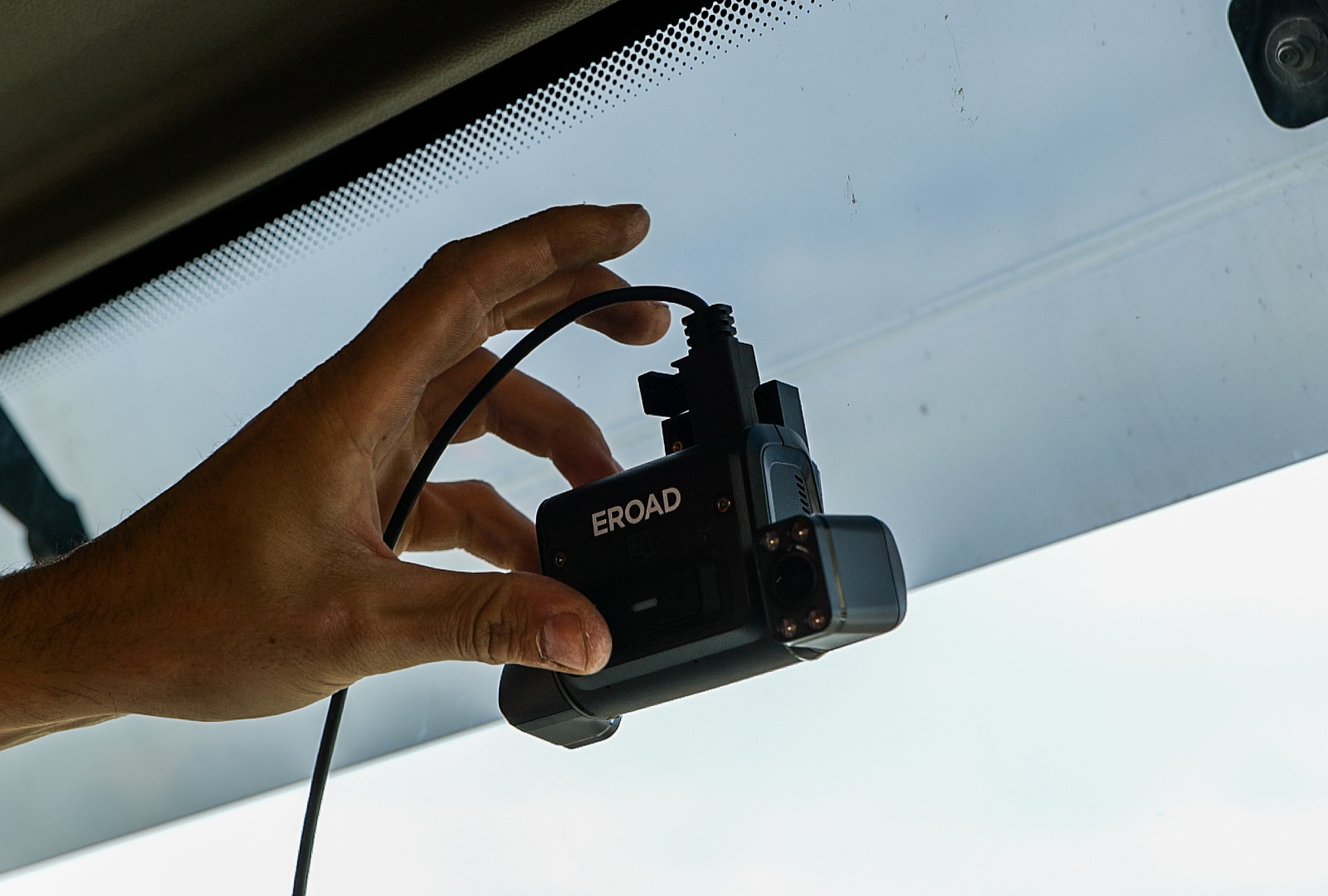
EROAD Clarity Get
Benefit from the powerful features of EROAD Clarity Dashcam, but only pay for the footage you need. EROAD Clarity Get combines high-definition video, GPS, driver behavior and fleet tracking data onto a single video telematics device, allowing you to enhance safety, efficiency and visibility across your fleet, no matter the size or type.
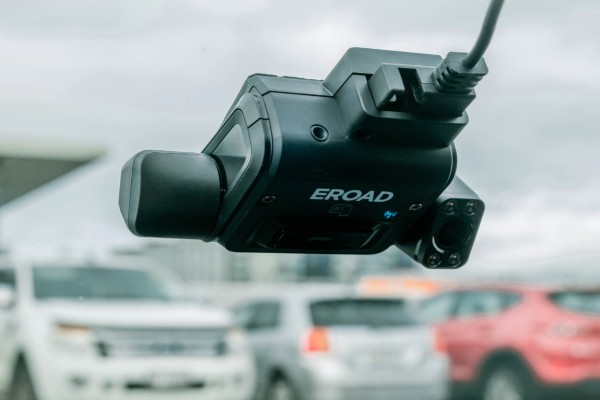
EROAD Clarity Solo
This powerful all-in-one video telematics device delivers cloud video, GPS location and driver behavior data. EROAD Clarity Solo is a standalone multi-sensor camera and is a great option for light- and medium-duty vehicles, last-mile delivery fleets, construction equipment and HOS-exempt heavy trucks.
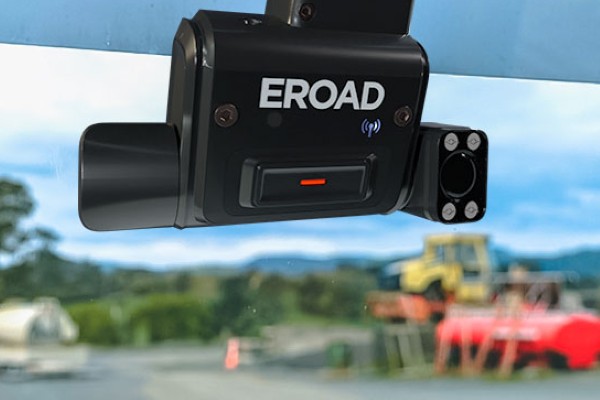
EROAD Clarity Connected
An in-cab camera that integrates with the EROAD ELD to provide GPS location and driver behavior data. The EROAD Clarity Connected in-cab camera provides visual context to what happens on the road for better driver coaching, incident investigation and driver exoneration.

